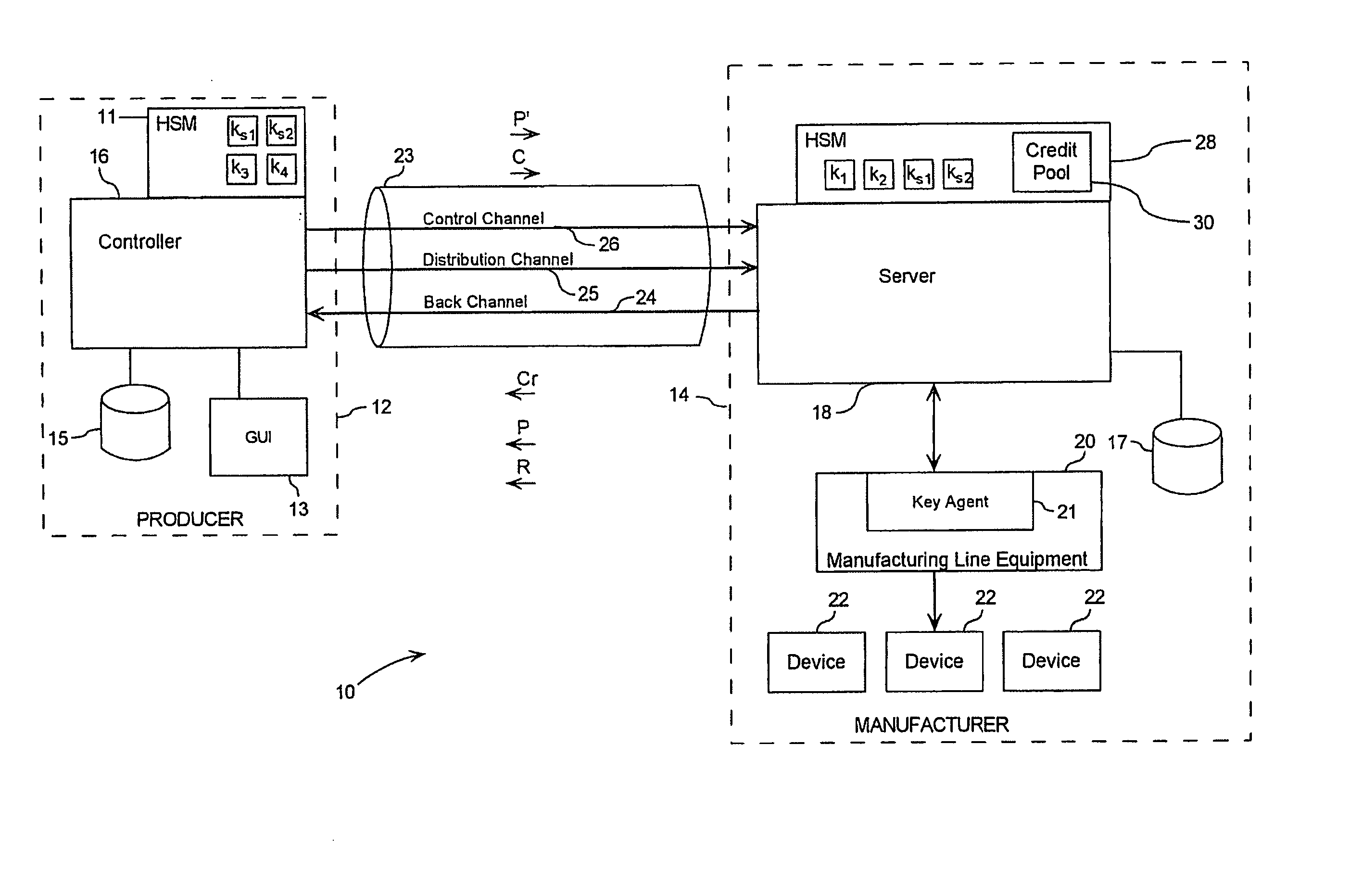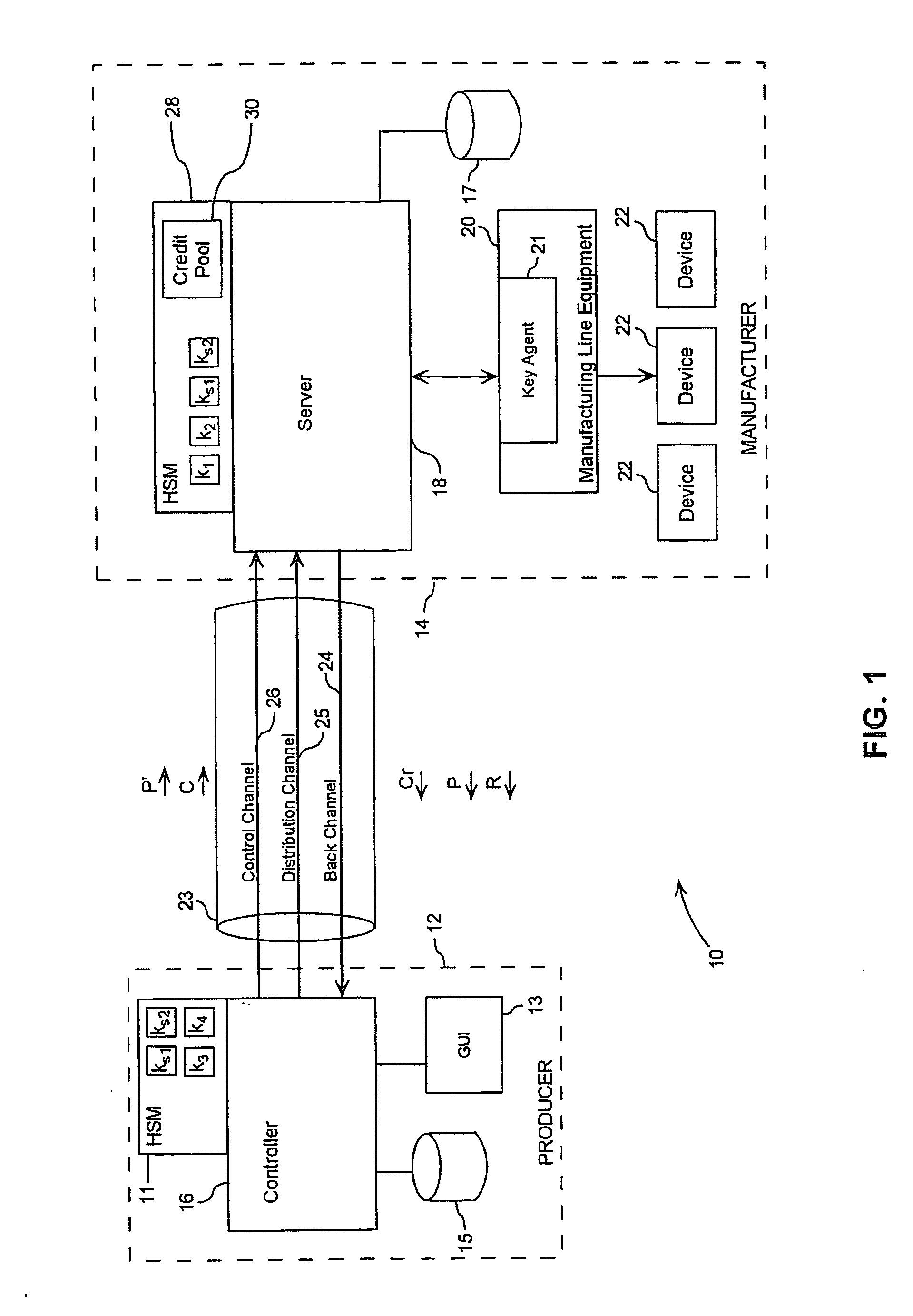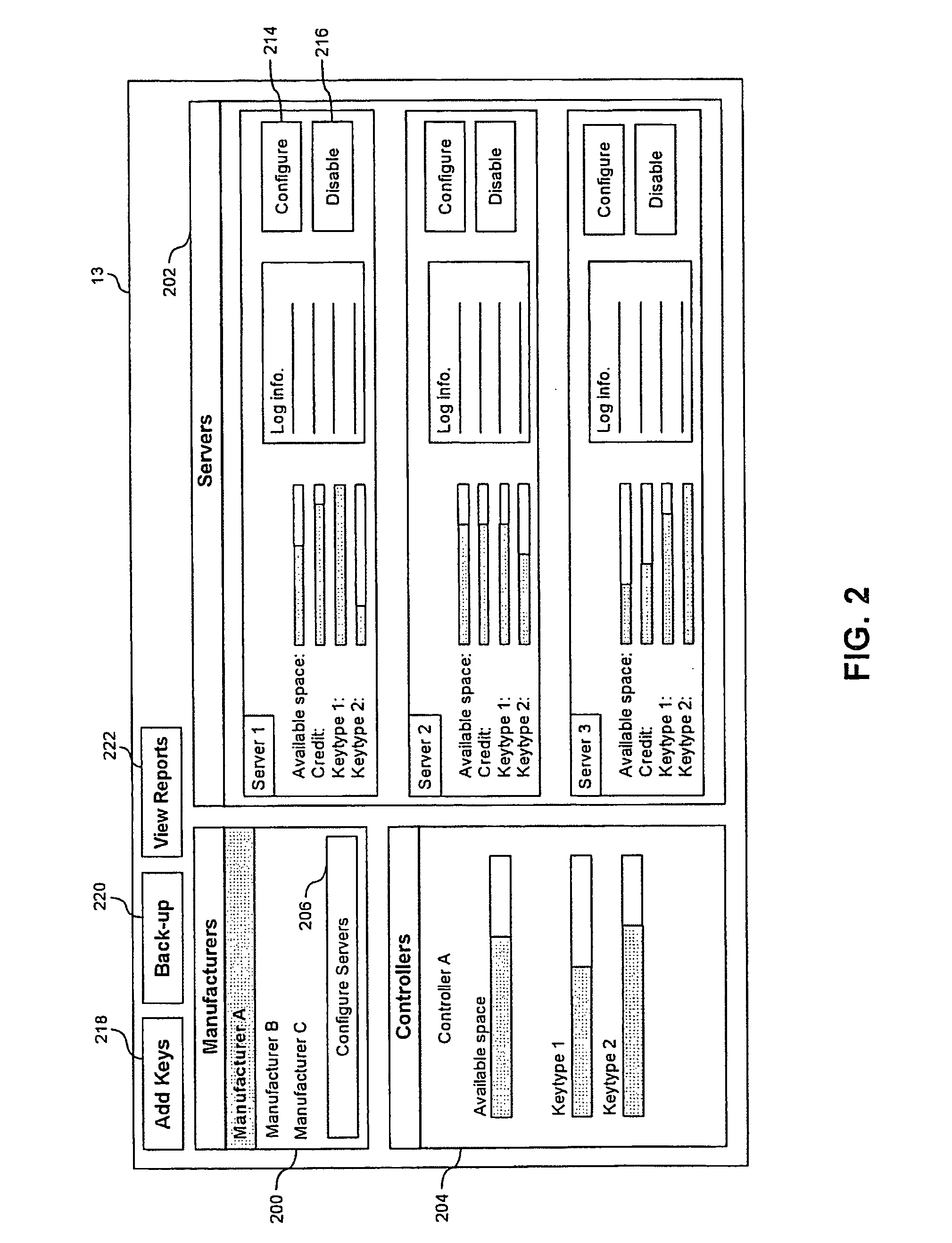System and method for remote device registration
a technology of remote device registration and registration system, which is applied in the direction of digital transmission, instruments, computer control, etc., can solve the problems of difficult to reproduce trusted data outside of the manufacturing process, device will not work as intended, and governing bodies may restrict or severe the distribution of keys
- Summary
- Abstract
- Description
- Claims
- Application Information
AI Technical Summary
Benefits of technology
Problems solved by technology
Method used
Image
Examples
Embodiment Construction
[0038] Referring to FIG. 1, a remote device registration or trusted key injection system is generally denoted by numeral 10. A producer 12 of a device 22 utilizes the services of a separate entity, in this case an outside manufacturer 14, for the injection of unique and immutable information into the devices 22. The information may be a cryptographic key, a shared secret, or some other data that may be cryptographically bound to an inherently unique attribute of the device 22 and will hereinafter be referred to as a “key”. The step of injecting the key into a device 22 will hereinafter be referred to as “keying” or “key injection”.
[0039] The producer 12 utilizes a controller 16, which is a computer system that is remote to the manufacturer's facility. The controller 16 includes a hardware security module (HSM) 11. The HSM 11 is a protected device used by the controller 16 to perform cryptographically secure operations, such as encryption, decryption and signing. The HSM 11 may be t...
PUM
 Login to View More
Login to View More Abstract
Description
Claims
Application Information
 Login to View More
Login to View More - R&D
- Intellectual Property
- Life Sciences
- Materials
- Tech Scout
- Unparalleled Data Quality
- Higher Quality Content
- 60% Fewer Hallucinations
Browse by: Latest US Patents, China's latest patents, Technical Efficacy Thesaurus, Application Domain, Technology Topic, Popular Technical Reports.
© 2025 PatSnap. All rights reserved.Legal|Privacy policy|Modern Slavery Act Transparency Statement|Sitemap|About US| Contact US: help@patsnap.com



